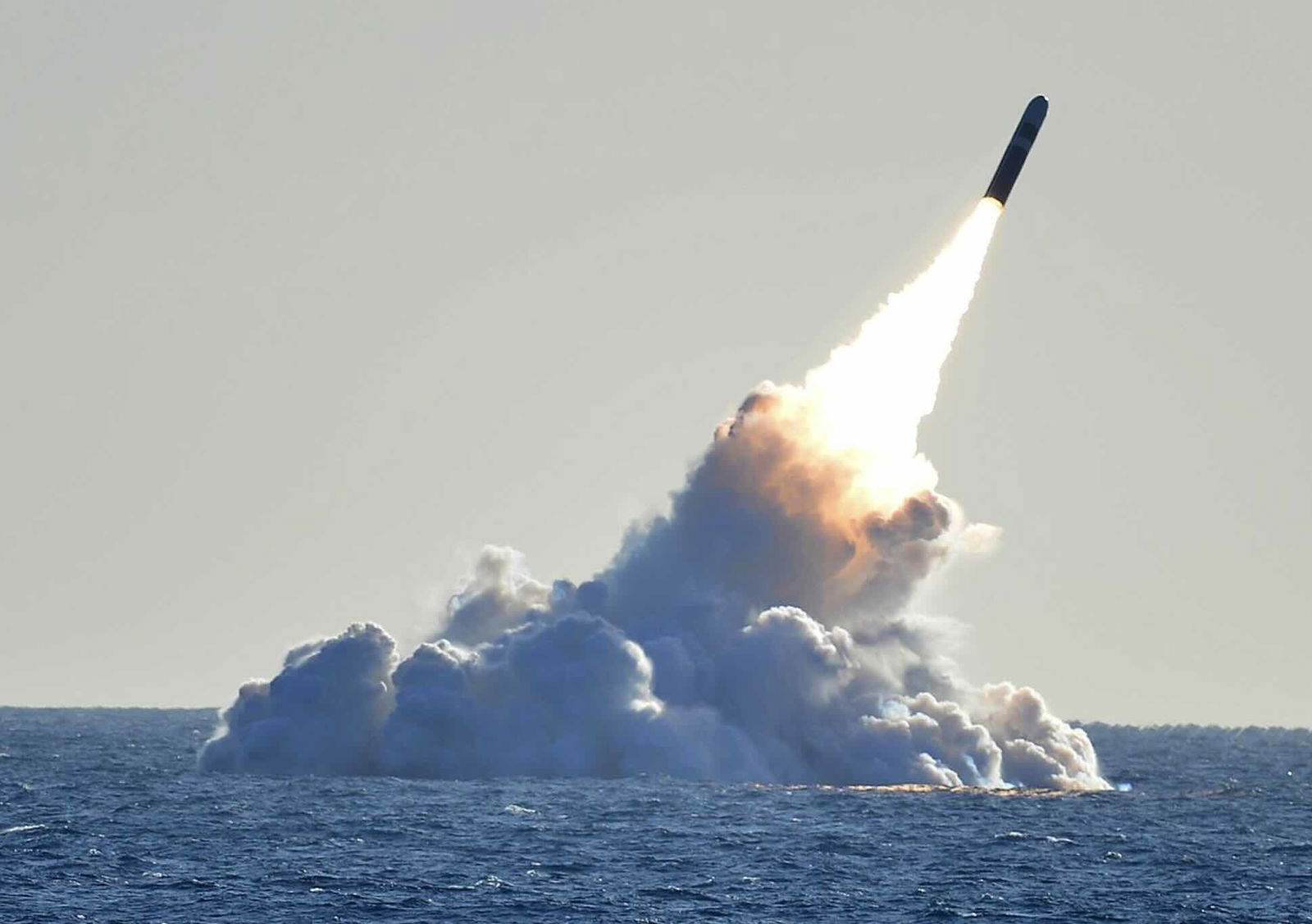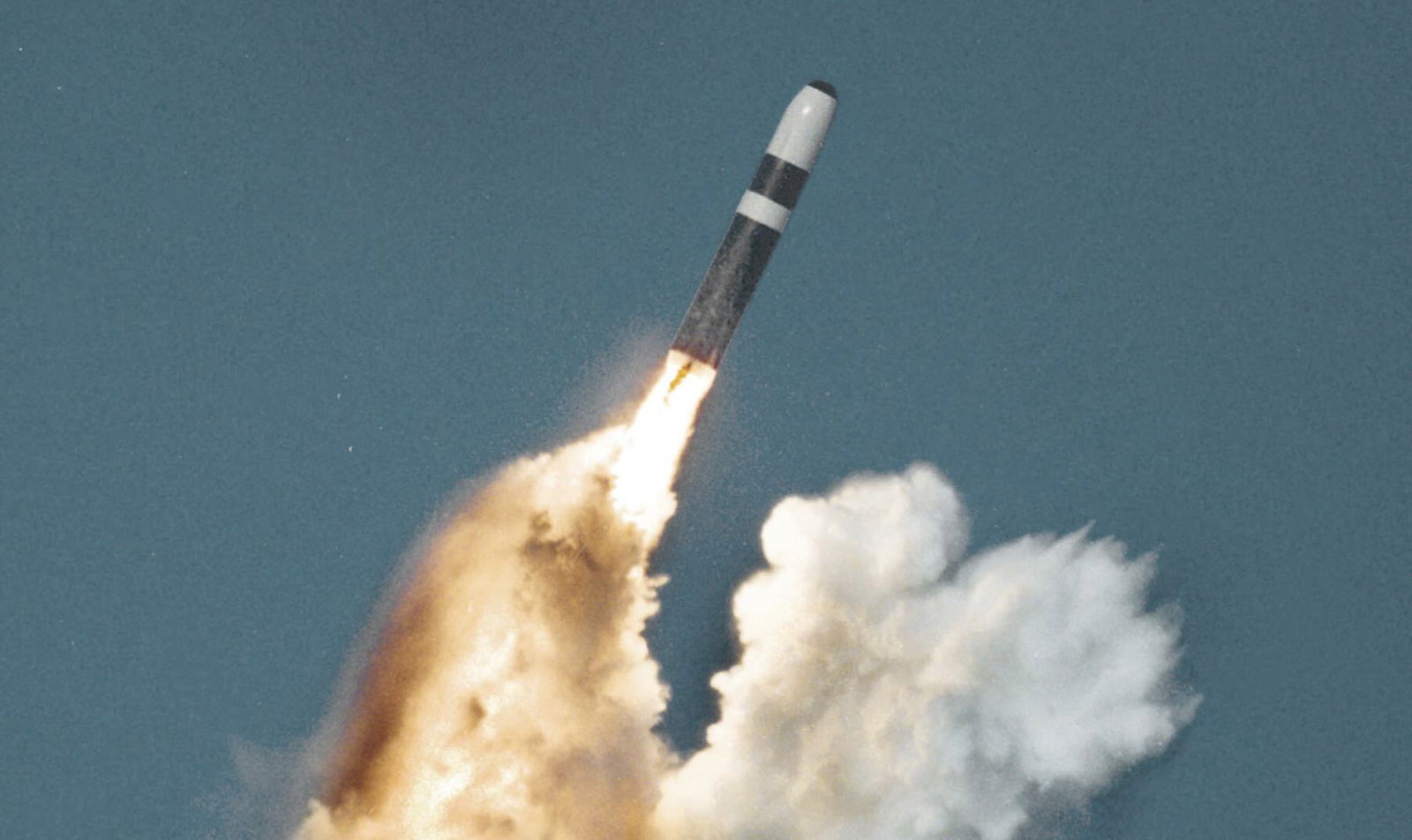The development of the U.S. military’s next-generation submarine-launched ballistic missiles has been put into motion, as defense giant Lockheed Martin has secured a $383 million contract to develop the next-generation Trident II D5 Life Extension 2 (D5LE2) missile.
The contract, awarded by the U.S. Navy, will help to secure America’s continued advancement in sea-based strategic deterrence for the next several decades, looking as far ahead as 2084.
The upgraded missile will be integrated into the U.S. Navy’s Columbia-class ballistic missile submarines and will play a crucial role in the fleet’s current efforts to modernize its strategic weapons systems.
Lockheed and the U.S. Navy’s Missiles
First introduced in 1990, the UGM-133A Trident II, also commonly known as the Trident D5, is the successor to the earlier Trident C-4, which first produced in 1979. An improved submarine-launched ballistic missile (SLBM), Lockheed Martin’s Trident 5 improved the accuracy, range, and payload of its predecessors and remains a crucial component of U.S. strategic deterrence today.
Still considered the most advanced submarine-launched ballistic missile currently in service, the Trident II D5 missile is deployed aboard U.S. OHIO-class and U.K. VANGUARD-class submarines.


The new contract awarded to Lockheed marks the next phase in the company’s efforts to provide state-of-the-art sea-based deterrence capabilities to the Navy’s Fleet Ballistic Missiles (FBM) program. Based on current expectations, the D5LE2 upgrade will significantly enhance the SLBM’s lethality and effectiveness and ensure greater reliability amid growing global tensions, particularly in the Indo-Pacific.
Strengthening Strategic Deterrence
The recently awarded contract for the D5LE2 upgrade is not the first time the Trident II has seen a life extension and marks the second effort to upgrade and improve the famous missile’s deterrence capabilities.
Over the decades, Lockheed Martin has often played a key role in developing and maintaining the U.S. Navy’s SLBM arsenal. It has also developed technologies that improve ballistic missile defense missions and a range of tools comprising aspects of strategic deterrence, which include command and control and advanced capabilities.
Jerry Mamrol, vice president of Fleet Ballistic Missiles at Lockheed Martin, said the Trident II’s second life extension marks another step toward helping the U.S. and its allies advance its readiness capabilities.
“The second life extension of the Trident D5 missile will enable the United States and United Kingdom, through the Polaris Sales Agreement, to maintain credibility deterring evolving threats,” Mamrol said in a statement.
Advanced Manufacturing for Strategic Defense
Another key component of Lockheed Martin’s Fleet Ballistic Missiles program is the company’s reliance on advanced digital engineering, which it combines with cutting-edge manufacturing capabilities and facilities across the country.
To complement the new D5LE2 upgrade, Lockheed Martin is building a new 225,000-square-foot facility in Titusville, Florida, where critical components for the upgraded missile will be produced.
The new facility is projected to generate close to 300 jobs for highly skilled applicants, which the company says will strengthen the Sunshine State’s aerospace and defense industry.
The facility is expected to be operational by the end of 2027, which will allow the program to meet the U.S. Navy’s current production schedule.
The new facility will serve as a focal point in supporting the Trident II program over the next six decades, helping to ensure the continued effectiveness of the nation’s sea-based nuclear deterrent as far out as the early 2080s.
“We are proud to continue our critical partnership with the U.S. Navy to take deterrence into this new era,” Mamrol said.
Micah Hanks is the Editor-in-Chief and Co-Founder of The Debrief. He can be reached by email at micah@thedebrief.org. Follow his work at micahhanks.com and on X: @MicahHanks.

